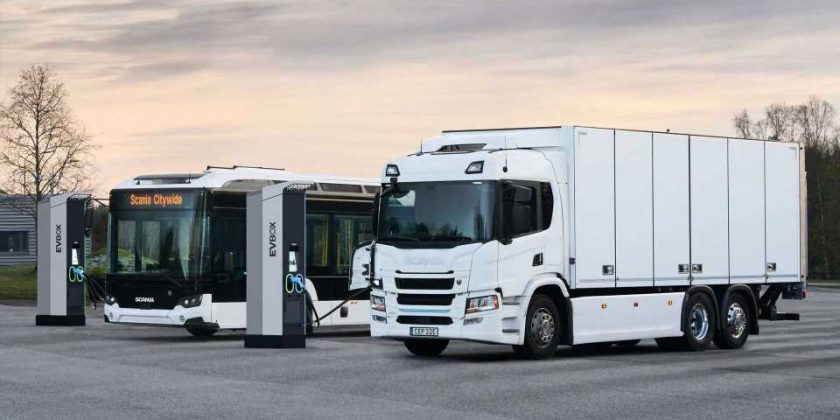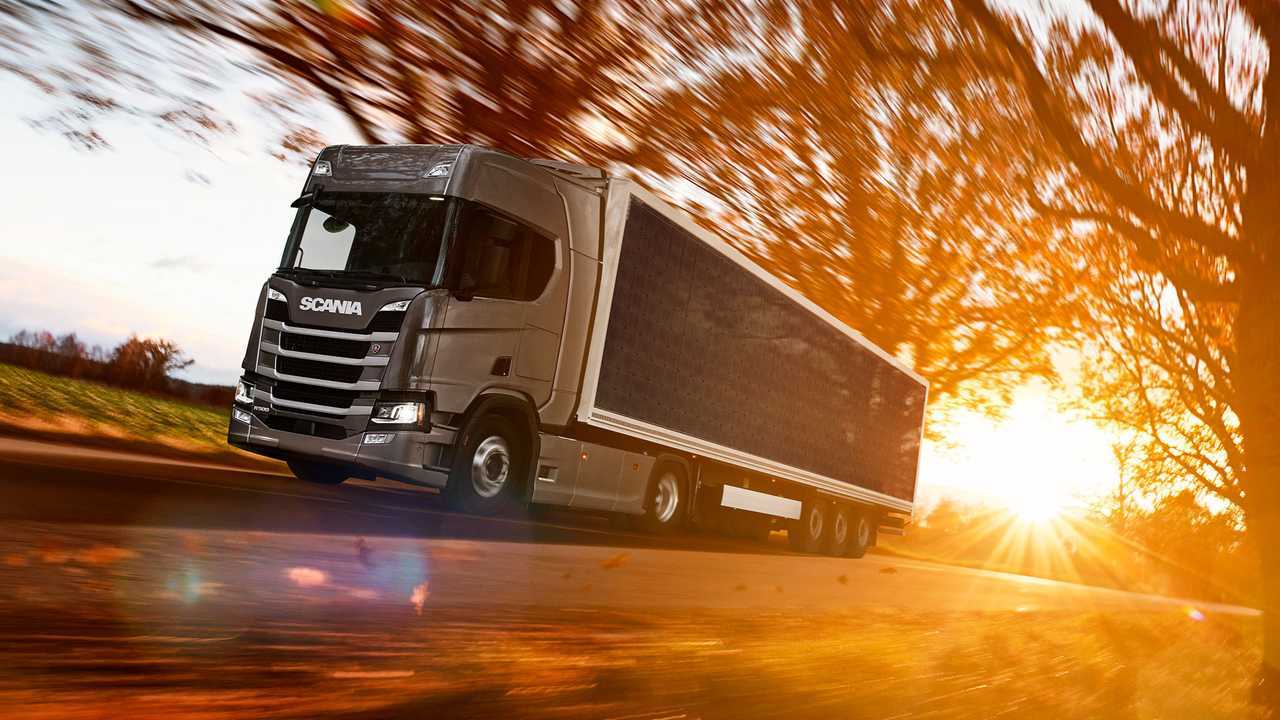Scania will gradually go battery-electric, as hydrogen fuel cell truck potential is limited.
Scania announced this month its commitment to battery-electric vehicles and not so much to hydrogen fuel cell vehicles.
The company has already introduced all-electric buses, as well as all-electric and plug-in hybrid trucks. The long term goal is to continue electrification and increase electrified vehicle share out of the total sales in Europe to 10% by 2025, and 50% by 2030.
At least one new “electric product application” in the bus and truck segment will be launched every year.
Scania said that thanks to technology improvements (battery energy density, charging times) electric vehicles will “gradually overtake Scania’s industry-leading fossil and biofuel powered solutions in most transport applications“. Another note is that – according to Scania’s experience with EV buses – “battery electric vehicle requires less service than a conventional one, meaning higher uptime and improved costs per km or hour of operations“.
Those are really key factors and we are more than happy to see it in an official press release.
Interesting is also that Scania admitted that its timing in electric segment “was not optimal”. We could not agree more, as the launch was late.
Long-range electric truck
Currently, Scania’s electric truck equipped with 300 kWh battery, has a range of up to 250 km (155 miles).
In the next few years, we should see a 40t (40,000 kg / 88,000 pound) long-range truck model that will be able to drive for 4.5 hours and then recharge during the drivers’ compulsory 45-minute rest. In other words, Scania is working on a full size truck.
“In a few years’ time, Scania plans to introduce long-distance electric trucks that will be able to carry a total weight of 40 tonnes for 4.5 hours, and fast charge during the drivers’ compulsory 45-minute rest.”
Battery electric vs hydrogen
Despite the fact that Scania has invested in hydrogen technologies and even put vehicles in operation with customers, the potential for FCVs is considered “limited.”
The first reason is that energy efficiency is just a third of the battery electric vehicle (FCVs use three times more renewable electricity to produce hydrogen and cover the same distance).
FCVs are also more complex, require more maintenance and they cost more. We would add also that there is no real refueling infrastructure.
“The engineers have gained valuable insights from these early tests and efforts will continue. However, going forward the use of hydrogen for such applications will be limited since three times as much renewable electricity is needed to power a hydrogen truck compared to a battery electric truck. A great deal of energy is namely lost in the production, distribution, and conversion back to electricity.
Repair and maintenance also need to be considered. The cost for a hydrogen vehicle will be higher than for a battery electric vehicle as its systems are more complex, such as an extensive air- and cooling system. Furthermore, hydrogen is a volatile gas which requires more maintenance to ensure safety.”
It seems that Scania will try to capitalize on its experience in hydrogen fuel cells in other applications, like stationary fuel cells:
“However, hydrogen is a promising energy carrier; good way of storing energy over long cycles, and will play an important role in decarbonisation if produced in an environmentally friendly way. Scania looks forward to sourcing fossil free steel for its trucks as hydrogen will play a greater role in several industries.
Stationary fuel cells are an important component of the electric charging system. This solution is especially promising in areas with abundant renewable energy, and in rural areas off the main electricity grid.”
Source: Read Full Article

